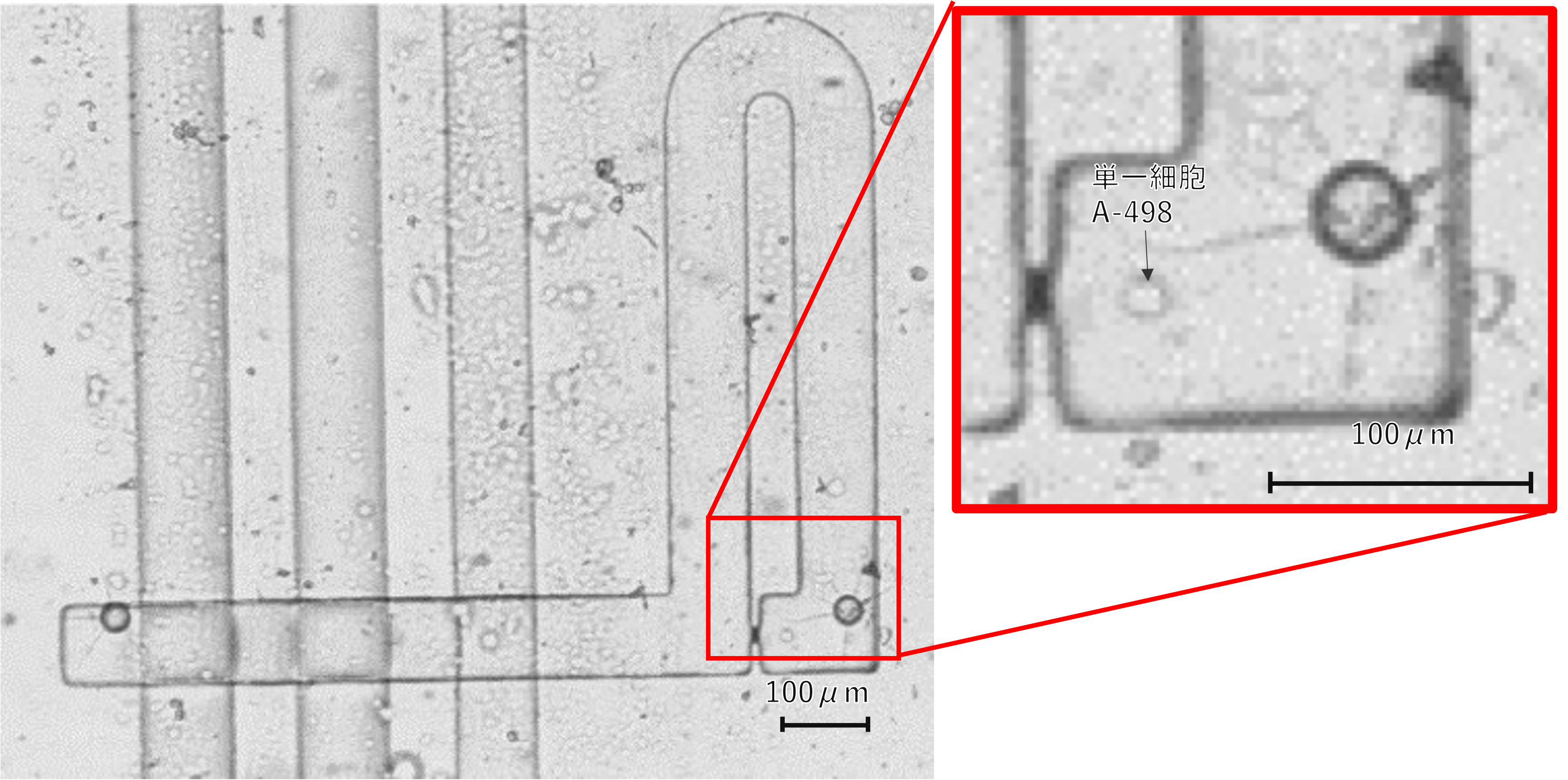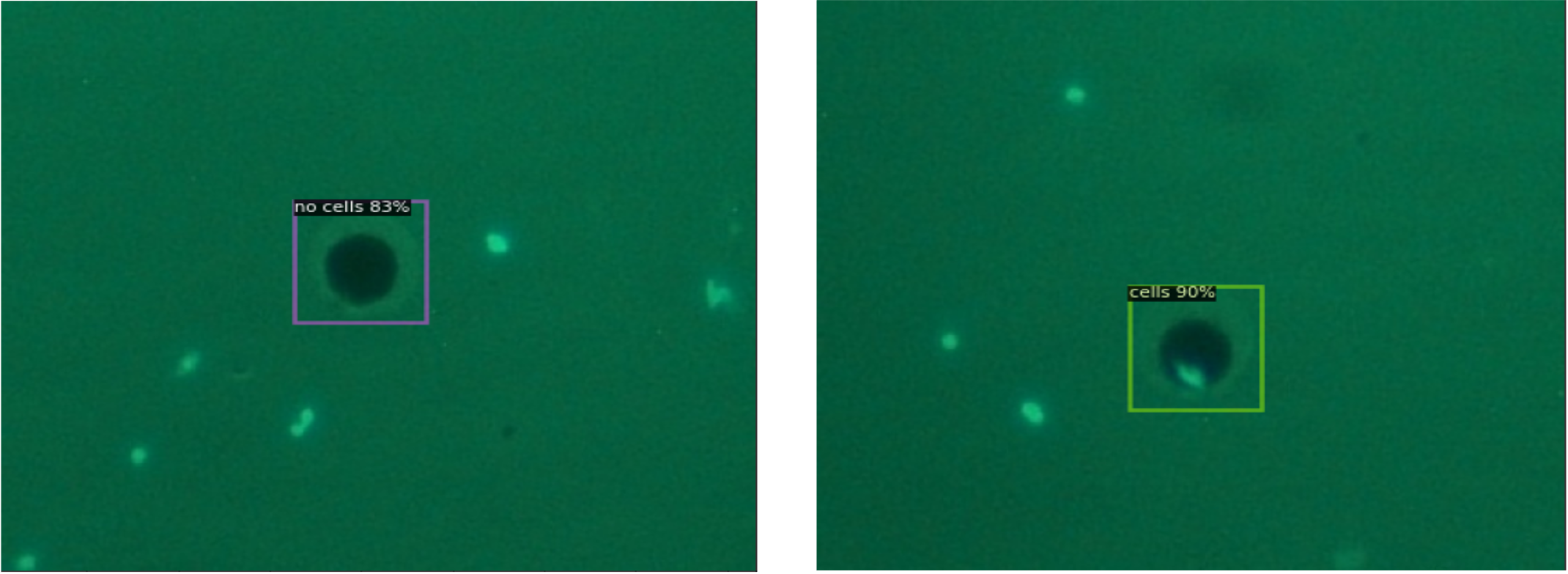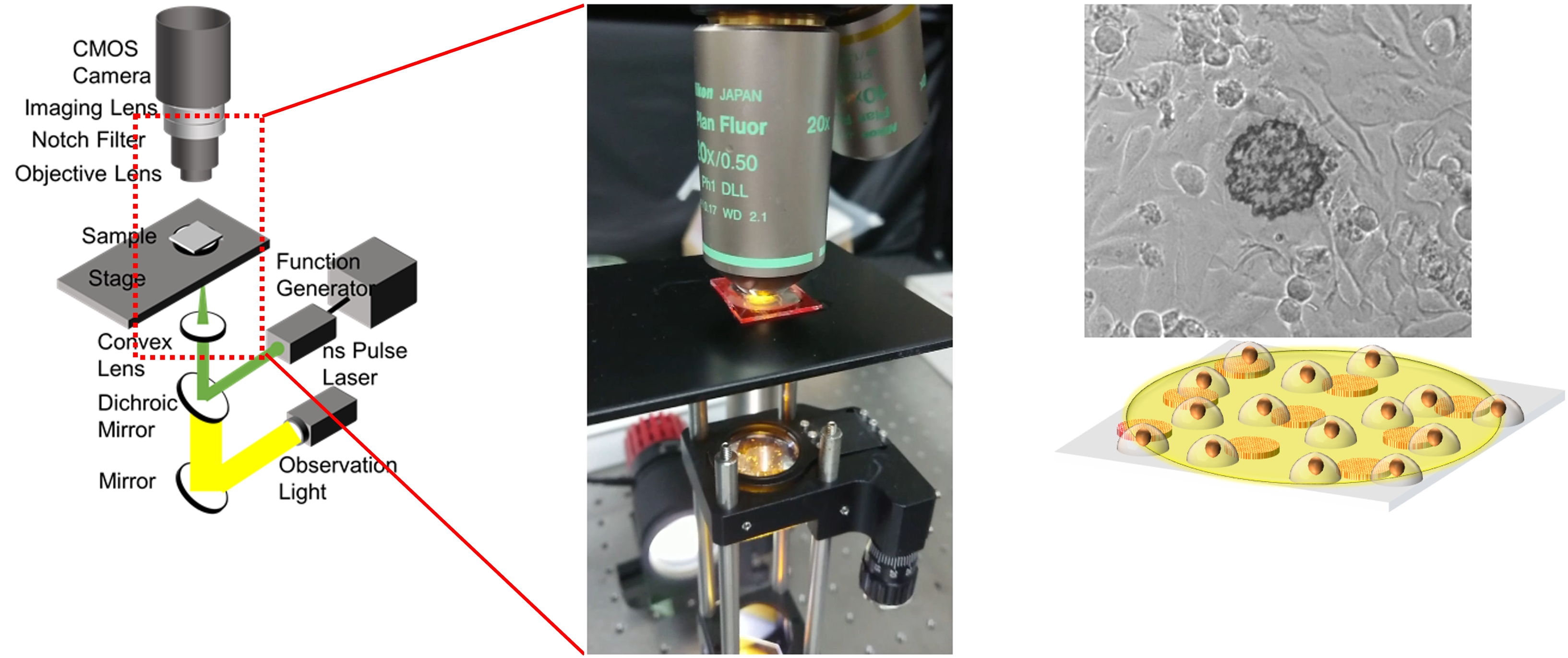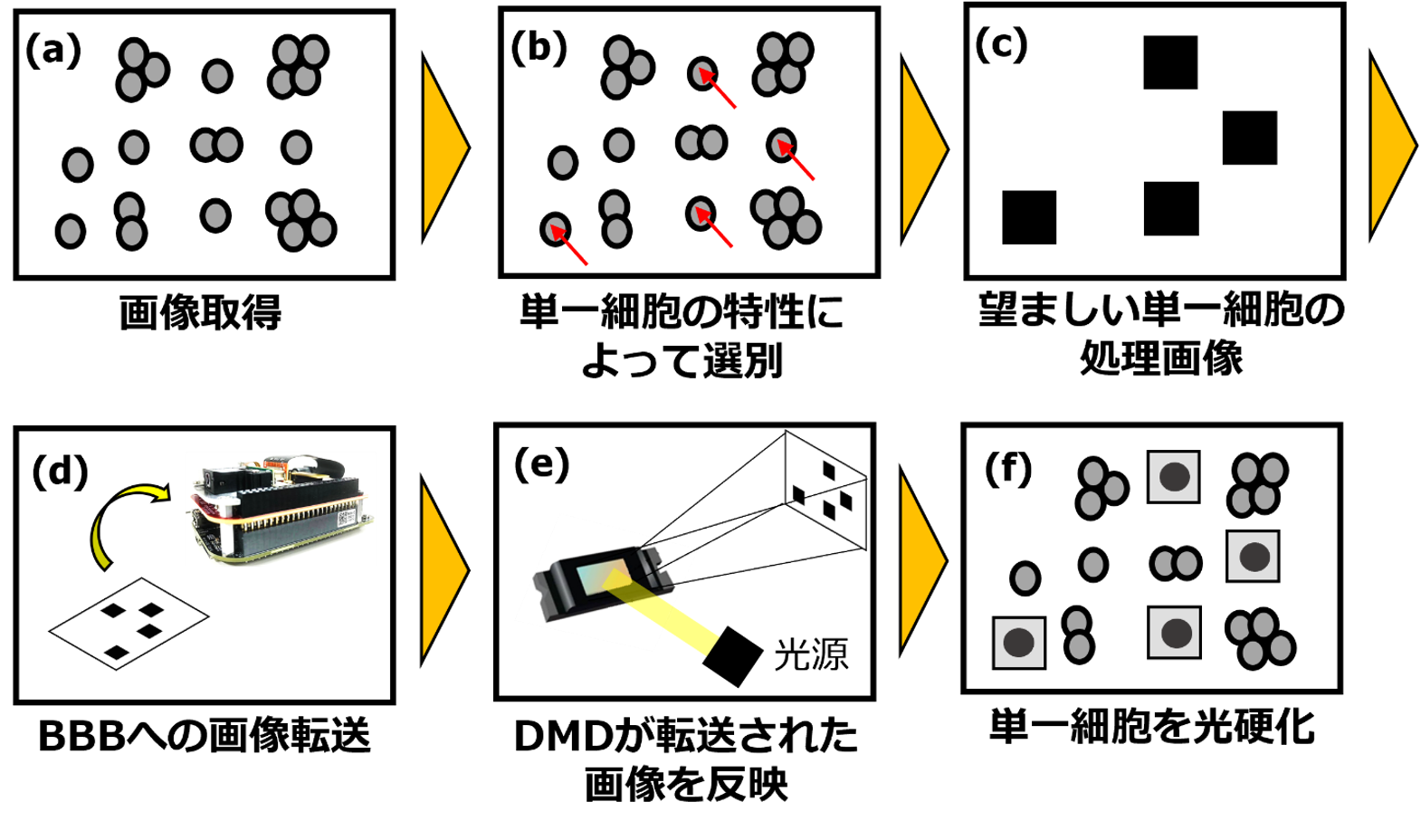ハイスループットマイクロ・ナノ工学研究室
High-throughput Micro/Nano Engineering Laboratory
Keywords: 細胞治療、創薬、MEMS/NEMS、マイクロシステム工学、マイクロ・ナノメカトロニクス、機械学習,
Cell therapy, Drug discovery, MEMS/NEMS, Microsystem engineering, Micro/nanomechatronics, Machine learning
ポスター(研究室)_A4配布用-724x1024.png)
当研究室では、マイクロ・ナノ領域の作業のスケールアップに取り組んでいます。特に単一細胞を大量に加工することが求められる細胞治療や創薬に向けた研究開発を行っています。マイクロ・ナノデバイス、メカトロニクス、情報科学の力を総合し、ハイスループットな細胞加工処理を実現します。
Our laboratory is working on scaling up work in the micro- and nano-domain. In particular, we conduct research and development for cell therapy and drug discovery, which require processing large volumes of single cells. We integrate the power of micro/nanodevices, mechatronics, and information science to achieve high-throughput cell processing treatment.
テーマ1 nLピペットアレイ、単一細胞3Dプリンタ nL Pipette array, single cell 3D printer
単一細胞解析技術は、単一細胞レベルでの遺伝子発現やそれを制御するメカニズムをDNAレベルで詳細に解析する技術です。単一細胞解析製品のコストが高く、単一細胞解析市場の成長を阻害する大きな要因となっています。より低コスト、容易に単一細胞を扱うツールとして、MEMS技術を利用してnLピペットアレイを開発し、細胞治療につながる細胞間相互作用を調査します。
Single-cell analysis technology is a technology for detailed analysis of gene expression at the single-cell level and the mechanisms that regulate it at the DNA level. The high cost of single-cell analysis products is a major factor hindering the growth of the single-cell analysis market. As a lower cost and easier tool to handle single cells, nL pipette arrays will be developed using MEMS technology to investigate cell-cell interactions leading to cell therapy.
テーマ2 単一細胞スクリーニング Single-cell screening
細胞集団から単一細胞レベルでスクリーニングする技術は、生命科学研究で基礎となる技術です。本研究ではアレイ上の構造内に細胞を保持し、細胞動態を観察した後に、光照射を利用して細胞を分類します。マイクロアレイから取り出した細胞は、クローン株の樹立やさらなる遺伝情報解析に利用できます。本研究により、細胞治療、抗体医薬、疾患モデルの促進に貢献し、単一細胞と遺伝子発現の相関解析を調査できるようにします。
The technique of screening cells from a cell population at the single-cell level is a fundamental technology in life science research. In this research, cells are maintained in an arrayed structure, and after observing cell dynamics, cells are classified using light irradiation. Cells removed from the microarray can be used to establish clonal lines or for further genetic analysis. This research will contribute to the promotion of cell therapy, antibody drugs, and disease models, and will enable the investigation of correlation analysis between single cells and gene expression.
テーマ3 オプトポレーション(光穿孔)Optoporation
細胞を目的の細胞に誘導するには、機能改変が求められます。ここでレーザ光の照射により、細胞を選択的に穴あけし、物質を輸送して機能を改変します。本手法は条件変更の容易性や低侵襲性から、細胞治療、抗体医薬生産、疾患モデル用の細胞を樹立するのに適しています。
Modification of cells is required to induce cells to become the target cells. Here, laser light irradiation is used to selectively puncture cells and transport substances to modify their functions. This method is suitable for establishing cells for cell therapy, antibody-drug production, and disease models due to its ease of modifying conditions and minimally invasive nature.
テーマ4 藻類細胞治療 Algae Cell Therapy
藻類は光合成と同時に物質を輸送できる能力を有しています。これらを複合し、患部付近で酸素を発生させ、さらに薬を輸送して、難治性疾患の治療に役立てます。
Algae have the ability to transport substances simultaneously with photosynthesis. Combining these two, they generate oxygen near the affected area and further transport drugs to help treat intractable diseases.










